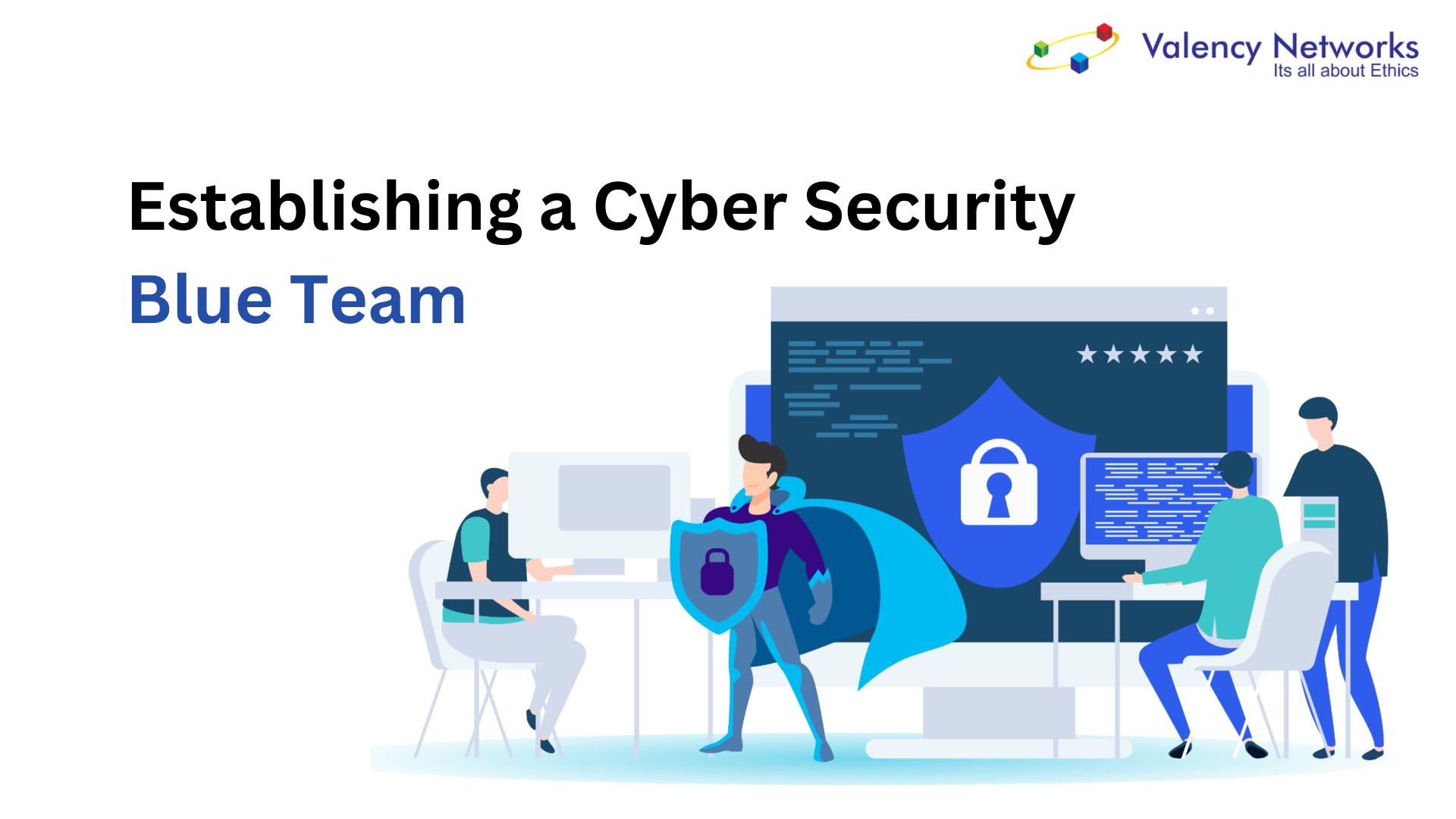Building an Effective Blue Team: Best Practices for Organizational Cybersecurity
Introduction
In the ever-evolving landscape of cybersecurity, organizations must adopt a proactive approach to defend against a multitude of threats. One way to do this is by establishing a dedicated Blue Team, which plays a crucial role in safeguarding an organization’s digital assets. In this article, we will discuss the differences between Blue Team and Red Team, the benefits of having a Blue Team, and best practices for setting up and maintaining one. Additionally, we will emphasize the importance of partnering with a Cybersecurity Red Teaming and Vulnerability Assessment and Penetration Testing (VAPT) services provider.
Understanding Blue Team vs. Red Team
Before delving into best practices, it’s essential to differentiate between Blue Team and Red Team functions.
-
Blue Team:
- The Blue Team is responsible for defending an organization’s network and systems.
- Their role is reactive, focused on maintaining security and responding to incidents.
- Blue Team activities include continuous monitoring, incident detection, incident response, and vulnerability management.
- Blue Team professionals work to prevent breaches and minimize damage when incidents occur.
-
Red Team:
- The Red Team, on the other hand, simulates cyberattacks to assess an organization’s vulnerabilities.
- Their role is proactive, and they attempt to breach security to identify weaknesses.
- Red Team exercises may include penetration testing, ethical hacking, and social engineering to mimic real-world threats.
- The goal is to find vulnerabilities before malicious actors do.
Benefits of Having a Blue Team
Establishing a Blue Team within your organization offers several benefits:
-
Improved Security Posture:
- A Blue Team’s continuous monitoring and threat detection help maintain a robust security posture.
-
Timely Incident Response:
- Blue Teams are equipped to respond quickly to security incidents, minimizing damage and downtime.
-
Enhanced Vulnerability Management:
- They identify and address vulnerabilities proactively, reducing the attack surface.
-
Compliance:
- Blue Teams play a crucial role in meeting regulatory and compliance requirements.
-
Security Awareness:
- A Blue Team can help educate employees about cybersecurity best practices, reducing the risk of insider threats.
Best Practices for Setting Up a Blue Team
To maximize the effectiveness of your Blue Team, follow these best practices:
-
Define Roles and Responsibilities:
- Clearly define the roles and responsibilities of team members to avoid overlap and ensure accountability.
-
Continuous Training:
- Invest in ongoing training and skill development to keep the team up-to-date with the latest threats and technologies.
-
Tools and Technology:
- Equip the Blue Team with the necessary cybersecurity tools and technologies for monitoring, threat detection, and incident response.
-
Information Sharing:
- Foster collaboration and information sharing with other departments and external security partners.
-
Incident Response Plan:
- Develop a well-defined incident response plan with clearly documented procedures.
-
Threat Intelligence:
- Integrate threat intelligence sources to stay informed about emerging threats.
-
Security Awareness:
- Conduct security awareness training for all employees to reduce the likelihood of human error.
Importance of Cybersecurity Red Teaming and VAPT Services
While Blue Teams focus on defense, partnering with a Cybersecurity Red Teaming and VAPT services provider is essential for several reasons:
-
Unbiased Assessment:
- External experts can provide an objective evaluation of your security measures, identifying weaknesses that internal teams might overlook.
-
Real-World Simulation:
- Red Team exercises simulate real-world threats, offering a genuine test of your defenses.
-
Comprehensive Vulnerability Assessment:
- VAPT services thoroughly assess your systems, networks, and applications, uncovering vulnerabilities before they can be exploited.
-
Risk Mitigation:
- Partnering with experts helps you proactively reduce risk and enhance your security posture.
What skills are required for the blue team?
Blue Team members should possess a combination of relevant credentials, certifications, and subject matter experience to effectively defend an organization’s cybersecurity posture. Common certifications for Blue Team professionals include Certified Information Systems Security Professional (CISSP), Certified Information Security Manager (CISM), Certified Information Systems Auditor (CISA), Certified Ethical Hacker (CEH), and CompTIA Security+. These certifications validate their knowledge in areas like risk management, incident response, and ethical hacking. Moreover, Blue Team members should have practical experience in network and system administration, knowledge of security best practices, understanding of various operating systems, and the ability to work with cybersecurity tools such as intrusion detection systems (IDS), security information and event management (SIEM) platforms, and vulnerability assessment tools. A blend of certifications and hands-on experience equips Blue Team professionals with the skills necessary to proactively protect an organization’s digital assets and effectively respond to emerging threats.
Conclusion
Establishing and maintaining a Blue Team is a fundamental component of any organization’s cybersecurity strategy. By understanding the differences between Blue Team and Red Team, recognizing the benefits of having a Blue Team, and following best practices, you can enhance your organization’s cybersecurity defenses. Additionally, collaborating with a Cybersecurity Red Teaming and VAPT services partner ensures a comprehensive approach to protecting your digital assets in an ever-evolving threat landscape.
What skills are required for the blue team?
Blue Team members should possess a combination of relevant credentials, certifications, and subject matter experience to effectively defend an organization’s cybersecurity posture. Common certifications for Blue Team professionals include Certified Information Systems Security Professional (CISSP), Certified Information Security Manager (CISM), Certified Information Systems Auditor (CISA), Certified Ethical Hacker (CEH), and CompTIA Security+. These certifications validate their knowledge in areas like risk management, incident response, and ethical hacking. Moreover, Blue Team members should have practical experience in network and system administration, knowledge of security best practices, understanding of various operating systems, and the ability to work with cybersecurity tools such as intrusion detection systems (IDS), security information and event management (SIEM) platforms, and vulnerability assessment tools. A blend of certifications and hands-on experience equips Blue Team professionals with the skills necessary to proactively protect an organization’s digital assets and effectively respond to emerging threats.

